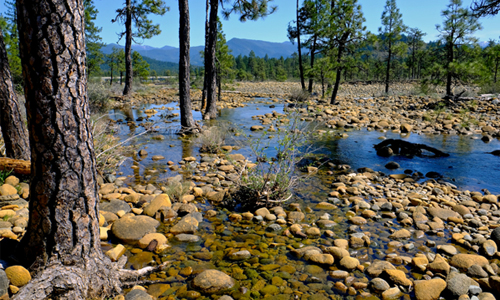


They go by the hardscrabble names of Baldface and Rough and Ready, and while they lack the pizzazz of tourist marketing, they excel with native grace, and their flush of crystalline water nourishes some of the finest runs of salmon downstream—vital for sport and commercial fishing. Elegant in snowstorms, brilliant with springtime blooms, these enclaves abound with botanical curiosities such as bug-eating plants. Vegetation found nowhere else worldwide thrives in ancient red soil; botanists worldwide come just to see it.
Baldface flows into the North Fork Smith, which crosses the border to become a gem of California, breathtakingly beautiful through the heart of redwood country. Flowing off the other side of the mountains, Rough and Ready joins the Illinois—a renowned branch of the legendary Rogue and its principal nursery of imperiled coho salmon.
While the Rogue, Illinois, and Smith have enjoyed decades-long protection and thrive as designated National Wild and Scenic Rivers, our two remarkable tributaries have just kept flowing in a way that one might imagine lasting forever. But that vision of prosperity is in jeopardy.
Exploration for open-pit nickel mines is proposed for both these basins; plans are pending at the U.S. Forest Service. On Google Earth, see the abandoned nickel mine at Riddle, south of Roseburg, to realize what awaits our slice of Siskiyou paradise.
Pollution could quickly infect the Rogue and Smith. The Appalachia-style strip mining is permitted under the Mining Law of 1872—a relic of Ulysses Grant’s presidency that allows miners to dig wherever they want on our public lands, exempt even from royalty payments and buffered from anti-pollution rules.

 233k
233k  41k
41k  Subscribe
Subscribe 
